When the mercury climbs, so do the snakes.
Scorching sun. Cracked earth. The kind of heat that makes the air shimmer. This is when the world’s deadliest snakes come slithering out of the shadows, bolder and more active than ever.
Summer is their season. Their playground. Their hunting ground.
From sizzling deserts to humid jungles, venomous serpents are on the move—fast, alert, and dangerously beautiful. Some glide silently through tall grass. Others sunbathe on rocky ledges, waiting for the slightest twitch from a passing lizard or unlucky hiker.
These aren’t your backyard garter snakes. We’re talking neurotoxins, lightning strikes, and fangs fine-tuned by evolution to stop a heart.
Curious yet? Good.
Let’s meet 20 of the planet’s most venomous heat-seekers—and learn how to admire them without becoming their next target.
Saw-scaled Viper
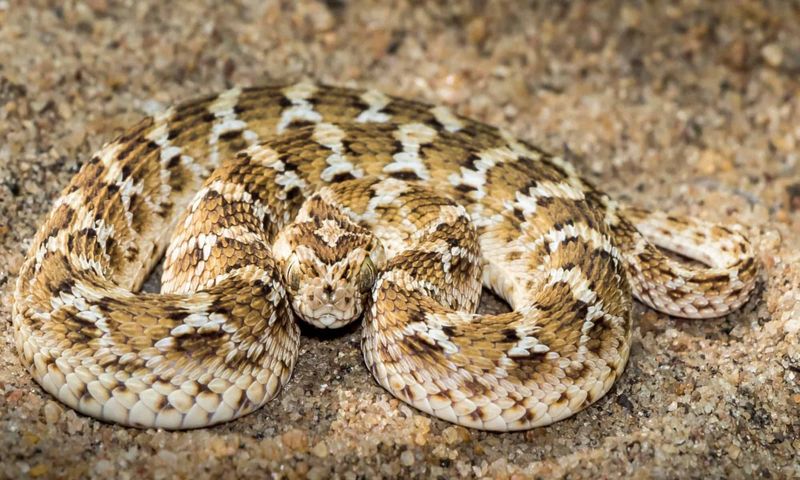
The saw-scaled viper, known for its distinctive warning sound, is one of the smallest yet deadliest snakes. Found primarily in arid regions, this snake prefers the intense heat of summer.
Its unique ‘sawing’ scales are not just for show; they create a menacing sound when rubbed together. The viper’s remarkable ability to camouflage makes it almost invisible in sandy terrains.
Despite its small size, its venomous bite is potent and can cause severe harm. The snake’s activity peaks during summer afternoons, making it crucial for hikers and locals to remain vigilant.
Inland Taipan
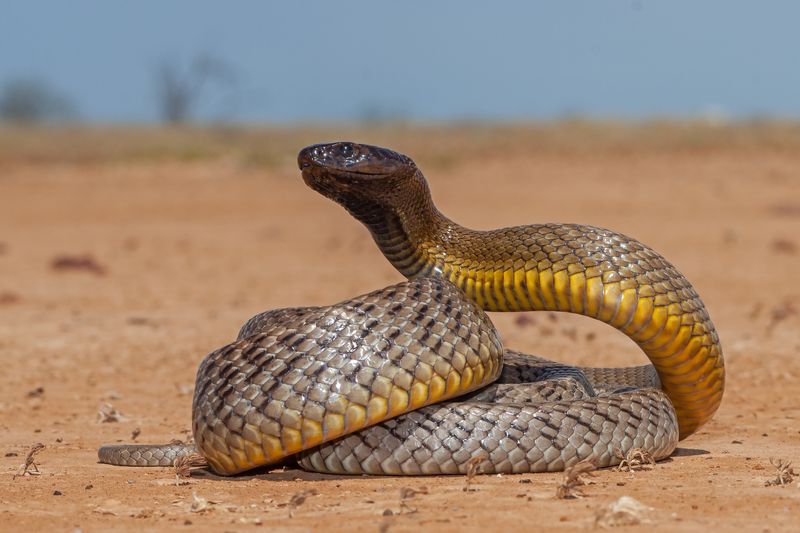
Dubbed the ‘fierce snake,’ the Inland Taipan is infamous for possessing the most toxic venom of any snake. Surprisingly, it is reclusive and rarely encountered by humans.
During summer, it emerges to hunt rodents, its primary prey in the Australian outback. The snake’s coloration changes with the seasons, becoming darker during warmer months to blend into the scorched landscape.
A single bite can deliver a lethal dose of venom, yet the snake remains elusive and shy, preferring to avoid confrontation whenever possible. Caution is advised in its habitat.
Black Mamba
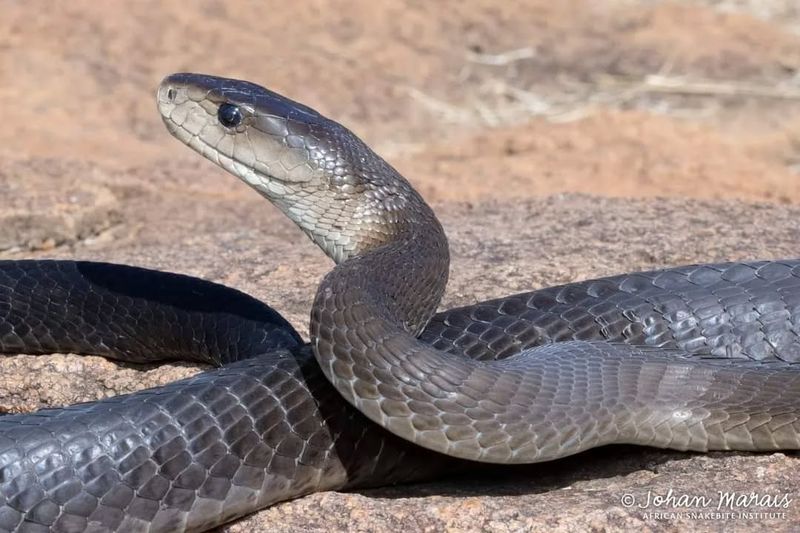
The Black Mamba, revered and feared across Africa, is a snake that exudes both grace and menace. Known for its incredible speed and agility, it becomes particularly active during the sweltering summer months.
This snake’s striking appearance and aggressive nature make it a formidable presence. It prefers savannas and rocky hills, where it can bask in the sun to regulate its body temperature.
When threatened, the Black Mamba can deliver multiple venomous bites in quick succession, making it one of the most dangerous snakes in the world.
King Cobra

The King Cobra, the longest venomous snake, commands attention with its regal presence. In India and Southeast Asia, it becomes more active during summer, seeking prey and mates.
Its hood, an iconic feature, is both a defensive display and a communication tool. The cobra’s venom is enough to kill an elephant, making it particularly lethal. However, it prefers to flee rather than fight.
The snake’s remarkable intelligence and ability to ‘stand’ and look adversaries in the eye make it a fascinating subject of study.
Gaboon Viper
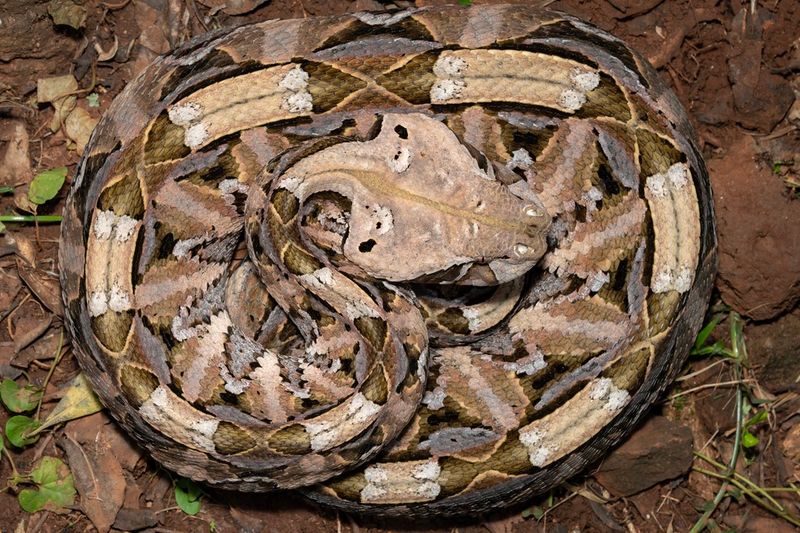
The Gaboon Viper, with its enigmatic patterns, is a master of disguise. Found in rainforests of sub-Saharan Africa, it lies still among leaf litter, waiting for prey. Summer heat catalyzes its metabolism, increasing its hunting efficiency.
This viper possesses the longest fangs of any snake, delivering a potent venomous bite. Its heavy body and sluggish demeanor can be deceiving, yet its strike is swift and precise.
Despite its deadly nature, the Gaboon Viper is rarely aggressive unless provoked, making it an elusive presence in its habitat.
Eastern Brown Snake

Australia’s Eastern Brown Snake, notorious for its quick temper, becomes even more active during the summer. Known for its rapid movements and potent venom, this snake is responsible for many snakebite incidents.
It thrives in various habitats, including urban areas, where it hunts small mammals and birds. The summer heat amplifies its activity levels as it seeks shade during the hottest parts of the day.
Fast and aggressive, the brown snake is best admired from a safe distance. Awareness of its presence and behavior is crucial for safety.
Russell’s Viper
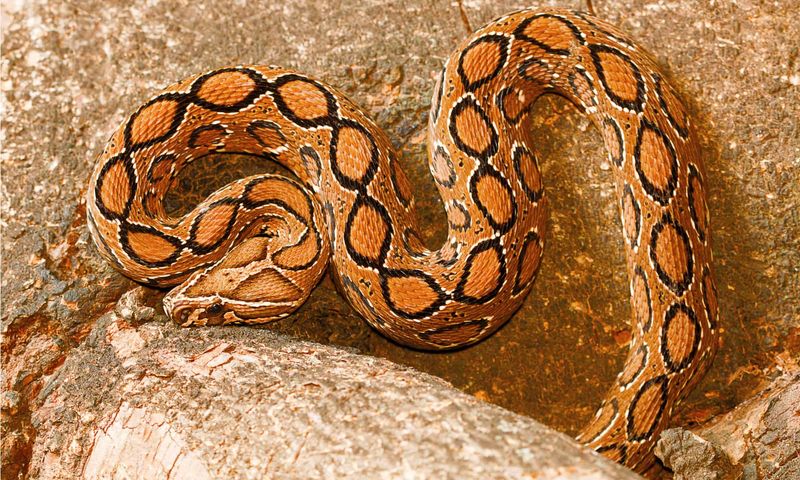
Known for its dramatic hiss and potent venom, Russell’s Viper is widespread across Asia. It becomes increasingly active during the summer, often venturing into human settlements.
This viper’s distinctive pattern serves as both camouflage and warning. With a preference for open country and fields, it hunts at dusk, a time when its camouflage is most effective.
The snake’s venom can cause severe symptoms, making it a significant medical concern in its range. Despite its lethal potential, it is often admired for its striking appearance.
Copperhead

The Copperhead, found in the eastern United States, is known for its coppery-orange head and patterned body. During the summer months, it becomes more active, especially around sunset.
This snake prefers rocky outcrops and wooded areas, where it blends with the environment. Its venom is mild compared to other venomous snakes, but it’s still best to exercise caution.
The Copperhead relies on camouflage to avoid threats, making it easy to overlook. Encounters often occur when the snake is stepped on or provoked, so vigilance is key.
Malayan Pit Viper
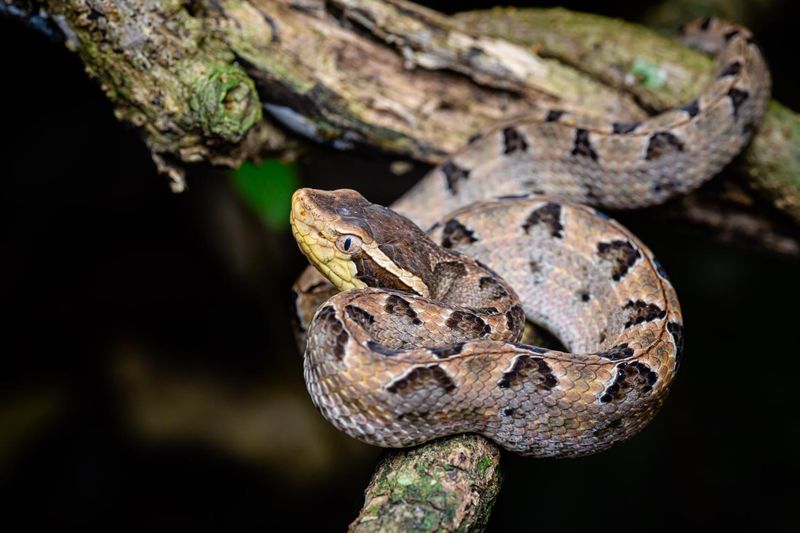
The Malayan Pit Viper, with its distinct triangular head, is a common venomous snake in Southeast Asia. It becomes more active in hot weather, often seen basking in the sun.
This snake’s bite can cause severe necrosis, making it particularly dangerous to humans. It has a laid-back demeanor, preferring to remain stationary in shaded areas. The pit viper’s camouflage is so effective that it’s often only noticed when it’s too late.
Therefore, it’s crucial to remain cautious in areas where this snake is known to reside.
Fer-de-Lance
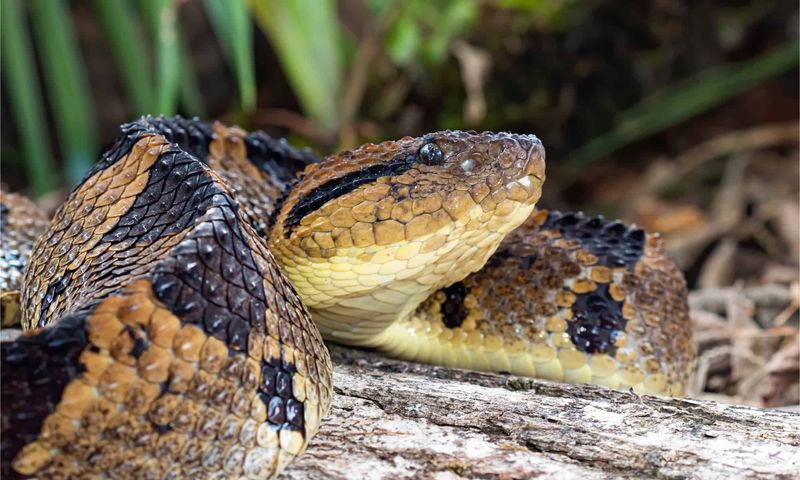
The Fer-de-Lance, a feared resident of Central and South American forests, is notorious for its aggressive nature. Summer marks its peak activity period as it actively hunts rodents and birds.
This snake’s camouflage enables it to remain unseen, even on well-trodden paths. Its venom is potent and can cause severe tissue damage. Known for its sudden and unpredictable strikes, the Fer-de-Lance commands respect and caution.
When venturing into forests during summer, awareness of this snake’s presence is vital to avoid dangerous encounters.
Puff Adder

The Puff Adder, with its characteristic puffing sound, is often encountered in Africa’s savannas. It becomes notably active in the summer heat, lying in wait for passing prey.
The snake’s robust body and striking pattern make it well-adapted to its environment. Despite its sluggish appearance, the Puff Adder has a rapid strike, delivering a powerful dose of venom.
It’s responsible for more snakebite incidents than any other snake in Africa. A master of ambush, this snake’s patience and stealth are key to its hunting strategy.
Coral Snake

The Coral Snake, renowned for its vivid coloration, is a secretive and elusive creature. Found in the Americas, it becomes more active during warm weather, seeking out its prey.
Its venom is neurotoxic, posing a serious threat if bitten. However, Coral Snakes are generally docile, preferring to hide rather than confront. Their striking banded pattern serves as a warning to potential predators.
Observers must be cautious and respectful of their space, especially in densely vegetated areas where these snakes are likely to reside.
Cantil

The Cantil, also known as the ‘Mexican moccasin,’ is a venomous pit viper native to Mexico and Central America. It is particularly active during summer, often found near water sources.
The snake’s dark coloration allows it to blend seamlessly with murky waters and dense foliage. Its venom is hemotoxic, causing intense pain and swelling. Despite its menacing appearance, the Cantil is relatively shy and will retreat if given the chance.
Awareness of its habitat is crucial for those exploring these regions during the hot months.
Rattlesnake

Rattlesnakes are an iconic symbol of the American West, thriving in arid deserts and rocky terrain. During the summer, these snakes are most active, often seen basking on warm surfaces.
Their distinctive rattle, used as a warning signal, is unmistakable. Rattlesnakes rely on their camouflage and patience to hunt small mammals. Their venom is potent, capable of causing serious harm.
Despite their reputation, they are not aggressive unless provoked. Hikers and adventurers should remain vigilant and respect their space, especially during peak activity months.
Banded Krait
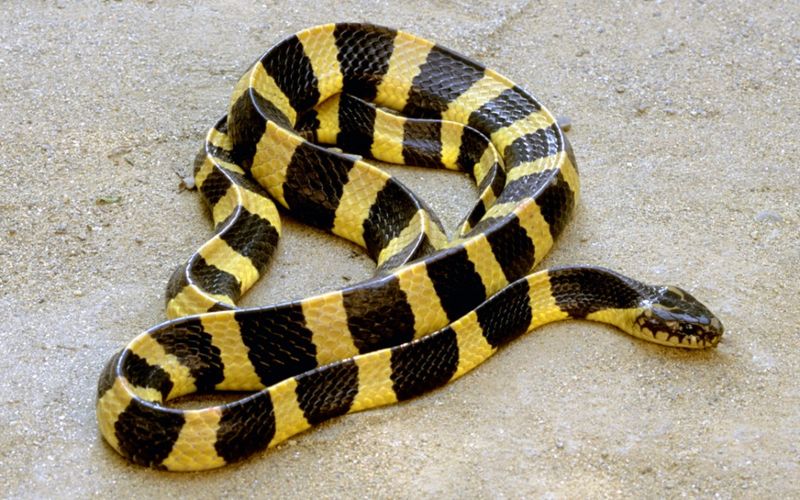
The Banded Krait, with its striking black and yellow bands, is a nocturnal snake found in Southeast Asia. Summer nights bring this snake to life as it hunts for prey.
Its venom is neurotoxic, affecting the nervous system. Despite its potent venom, the Banded Krait is shy and prefers to escape rather than bite. Its striking coloration is both a warning and a means of camouflage among jungle foliage.
Encountering this elusive snake is rare, but caution is advised in its habitat. It’s a mesmerizing yet dangerous beauty.
Viperine Snake
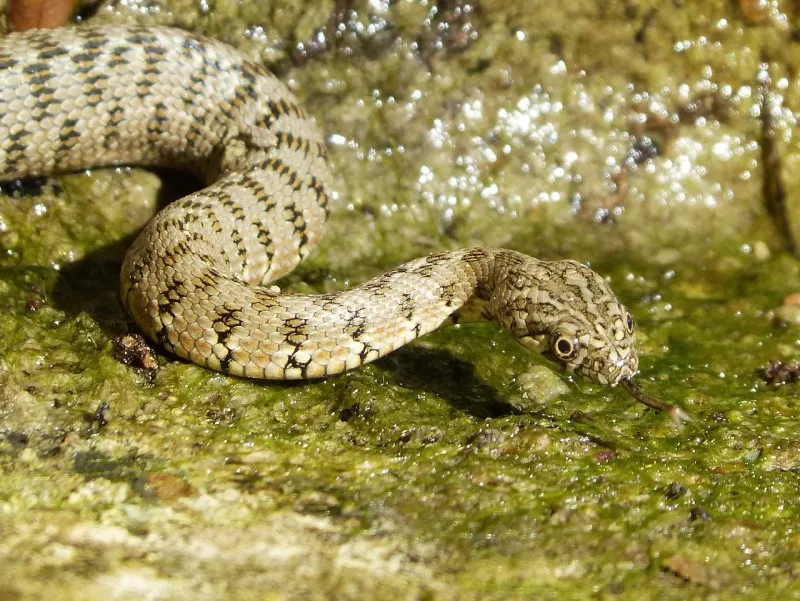
Although not a true viper, the Viperine Snake mimics one to deter predators. Found in Europe and North Africa, it becomes active during summer, especially near water.
This non-venomous snake relies on fish and amphibians for sustenance. Its viper-like appearance is a fascinating example of mimicry, providing an evolutionary advantage.
The Viperine Snake’s movements are fluid and graceful, often seen gliding through streams. While harmless to humans, it adds an element of surprise to any waterway encounter, showcasing nature’s ingenuity at its finest.
Horned Viper
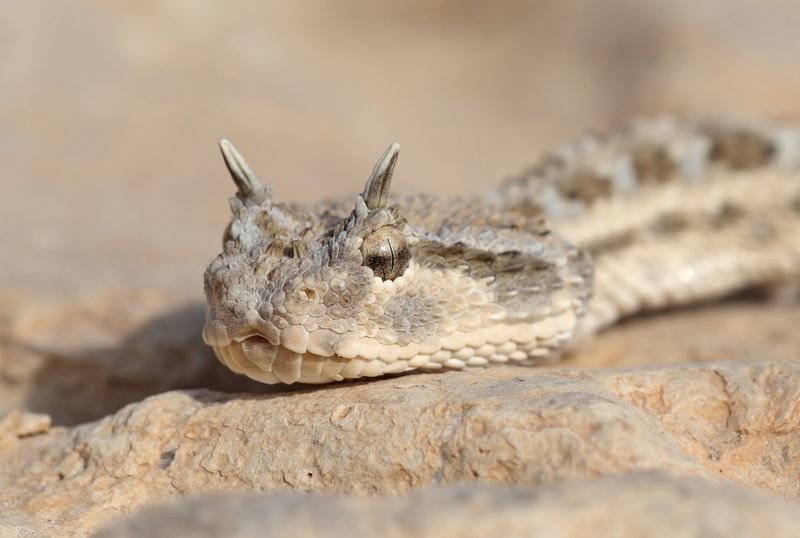
The Horned Viper, with its distinctive horn-like scales above the eyes, is a striking desert inhabitant. Active during the hottest months, it blends perfectly with sandy environments.
This snake’s venom can cause severe local and systemic effects, making it a significant threat. Despite its formidable appearance, the Horned Viper is not aggressive unless cornered.
Its unique locomotion, known as sidewinding, allows it to move efficiently across loose sand. The Horned Viper’s adaptability and survival skills are a testament to nature’s resilience.
Boomslang

The Boomslang is a highly arboreal snake, often found in the trees of sub-Saharan Africa. During summer, it becomes more active, hunting birds and lizards. Its large eyes provide excellent vision, allowing it to spot prey from a distance.
The Boomslang’s venom is haemotoxic, leading to severe bleeding if untreated. Despite its potent venom, it is a shy snake, preferring to escape rather than engage.
Its vibrant green coloration serves as perfect camouflage among the leaves, making it a challenging sight in its natural habitat.
Tiger Snake
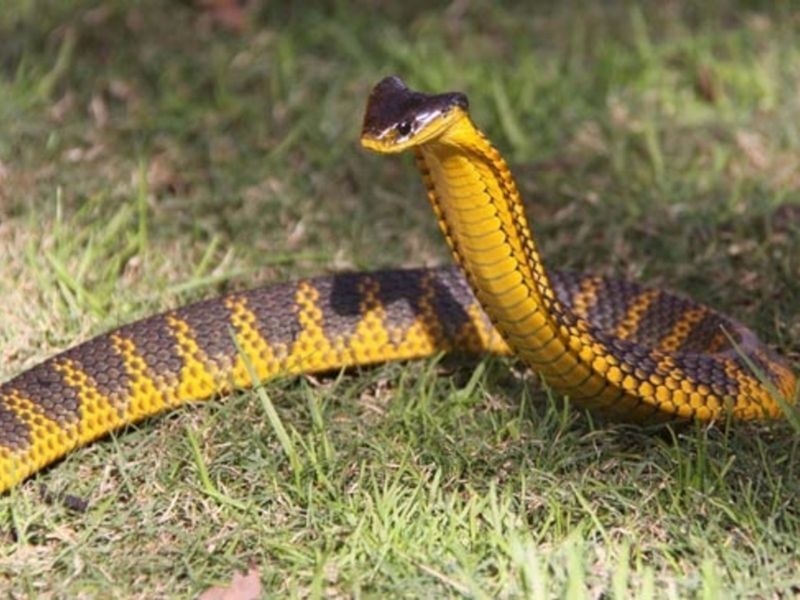
Tiger Snakes, native to southern Australia, are known for their striking banded appearance. Summer sees them more active as they search for food and mates.
They inhabit coastal areas, wetlands, and grasslands, often crossing paths with humans. The snake’s venom is potent, causing serious symptoms if bitten. However, like many snakes, it prefers to avoid confrontation.
Its adaptability to varied environments makes it a resilient predator. The Tiger Snake’s beauty is matched by its potential danger, reminding us of the delicate balance of nature.
Eyelash Viper
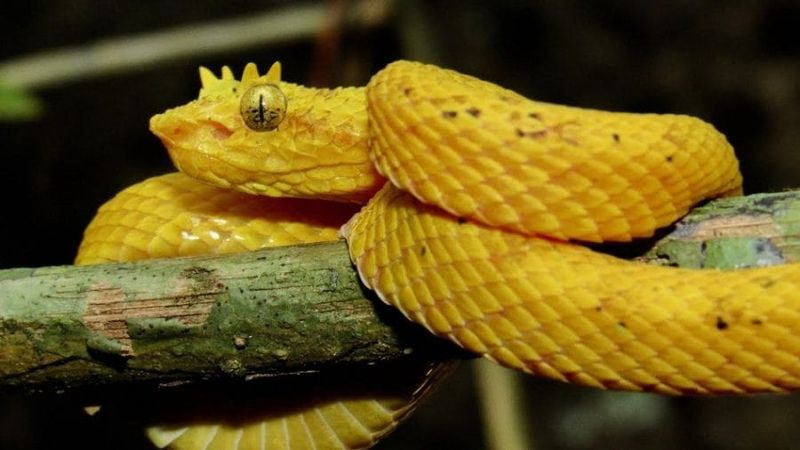
The Eyelash Viper, with its striking coloration and distinctive supraocular scales, is a marvel of the Central and South American rainforests. Its vibrant hues serve as both warning and camouflage amidst the lush vegetation.
These vipers are known for their ambush hunting techniques, lying in wait for unsuspecting prey to wander by. Their quick strikes and potent venom make them efficient predators, especially during the energetic summer months.
A quirky aspect of the Eyelash Viper is its tendency to appear in multiple color morphs, ranging from bright yellow to deep greens, adding to their mystique and allure.

